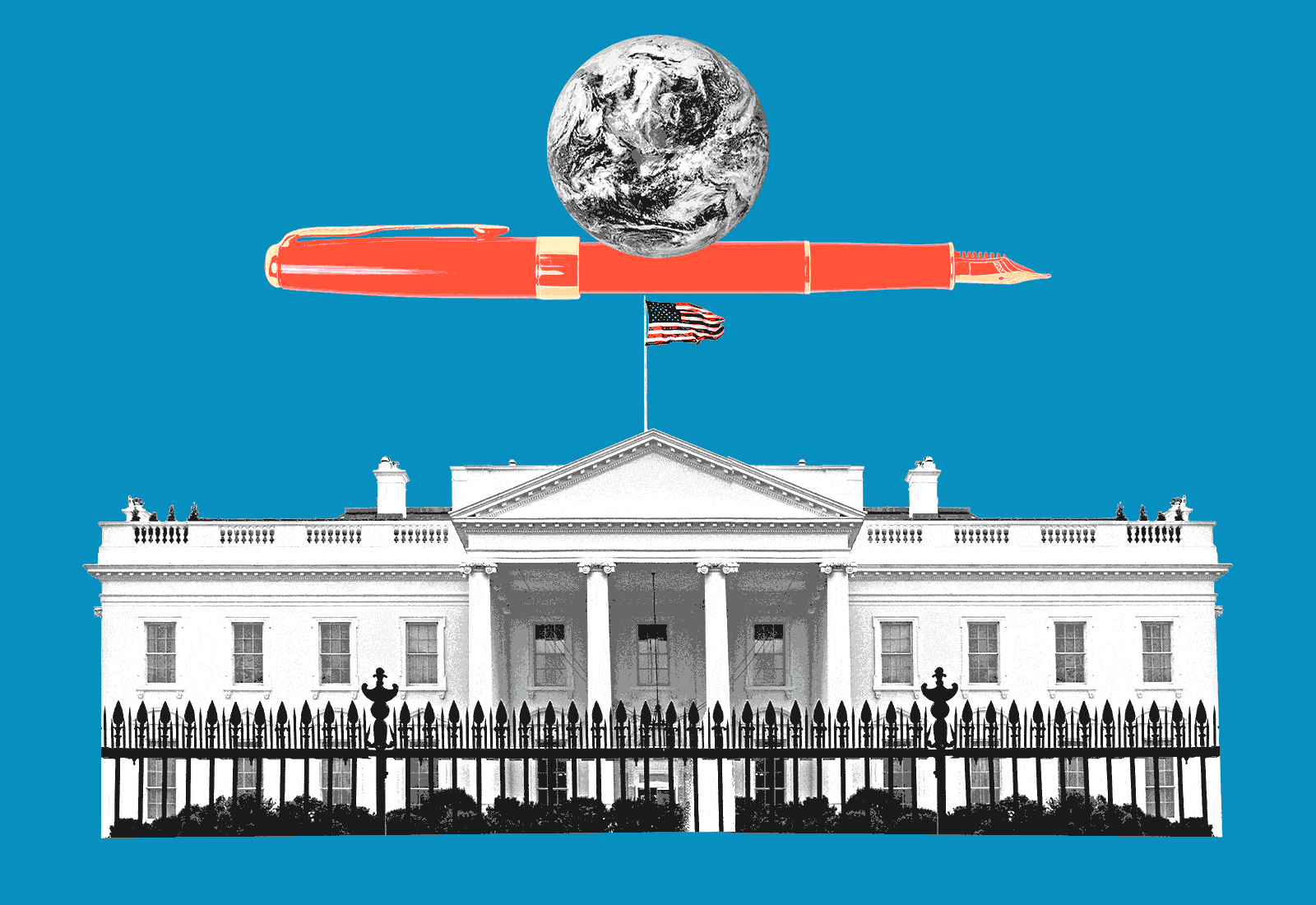One year ago, President Joe Biden ordered the review of the slew of rules and regulations on air, water, and land that his predecessor had either weakened or dismantled. Even at the time, just one day into his presidency, it was fair to call Biden’s plans to reverse former President Donald Trump’s environmental rollbacks ambitious. Legal experts warned that significant progress would not happen overnight — or even, as it turns out, over the following 12 months.
So far, Biden’s attempts to undo the previous administration’s environmental legacy have been mixed. Part of that is by design: Many of Trump’s pollution-increasing policies were crafted to resist easy reversal by his successor.
Grist is looking back at the Biden administration’s attempts to undo Trump’s environmental rollbacks, noting the progress policymakers have made toward rescinding or otherwise reversing their harmful effects. We’ve compiled and visualized that data in partnership with the University of California, Berkeley’s Center for Law, Energy & the Environment.
The resulting policy tracker, presented below, offers a snapshot of the regulatory state of play — one that we’ll continue to update throughout 2022 — and a report card of sorts on the Biden administration’s efforts to reverse its predecessor’s toxic legacy.
How to use the tracker
Click on a bubble in the app below to learn more about each rollback. We’ve highlighted 48 rollbacks of “major” importance, as identified by our research team. For more detail, you can also sort the chart and table of rollbacks by what environmental areas they impact, the lead agency responsible for undoing them, and how difficult they are to repeal. Click on a table row to see a full description of each rollback. (Want more information on how we put together the tracker? Read our FAQ below.)
Rolling back the rollbacks
Tracking the Biden administration’s environmental agenda
How did we categorize each impact?
We started by looking at the impact of each of the 211 environmental rollbacks enacted by the Trump administration in four areas: climate, environment, health, and programs and process. Many of these rollbacks have effects on multiple impact categories, such as both health and environment. (Note: This tracker only looks at Biden’s progress reversing Trump’s rollbacks; it does not include new Biden administration environmental policies or rules.)
- Climate
While “climate” is a broad term, this category refers to rules, regulations, and programs that would have an impact on greenhouse gas emissions. Examples include rollbacks on power plant emissions, appliance energy efficiency standards, oil and gas extraction, and Trump’s withdrawal from the Paris Agreement. - Environment
This category refers to the impact of a rollback on the physical environment separate from its contribution to overall emissions. These rollbacks could have effects on air, water, and land, especially in terms of habitat health. This category included almost all rollbacks related to water pollution. It also included major policies and rules related to Superfund site cleanups. - Health
Our research team put rollbacks in this category when they determined they would likely have a direct impact on human health. Many of these rollbacks are related to air quality and drinking water. - Programs and process
We noticed that a number of Trump’s rollbacks were about the rulemaking process itself — instructing agencies how to make rules going forward or prescribing, for example, how they could or could not make settlement agreements. Many of these changes limited an agency’s ability to act. In effect, they seemed to be rules designed to make policymaking harder.
What makes something a “major” action?
Because our impact scorecard measured a rollback’s breadth of influence rather than its severity, our research team decided to add an additional designation to help identify significant items. Our research team looked at each rollback in terms of its relevance to the public, newsworthiness, and overall significance. Based on those qualitative measures, they identified 48 rollbacks as “major actions.” In the words of Ted Lamm, senior research fellow at Berkeley’s Center for Law, Energy & the Environment, “We wanted a way to say, ‘We think this is the big headline stuff.’”
Why are some rollbacks harder to repeal than others?
Trump’s environmental rollbacks came about as the result of many types of actions — executive orders, guidance documents, and other policymaking maneuvers. A group of those rollbacks could be undone relatively simply, without judicial or legislative review. We labeled these “easy.” In many cases, Biden could reverse a Trump rollback by simply signing his name to an executive order.
Likewise, many early wins came from new agency leadership reversing the previous administration’s guidance. More often than not, these types of rollbacks fall in the “programs and process” impact category — they are behind-the-scenes regulations that govern how laws are implemented and how environmental agencies do their jobs. That’s why, one year on, you see Biden making more progress in that area compared to the other impact categories.
Not surprisingly, in the early months of Biden’s administration, there was a flurry of these easy reversals. Other rollbacks, however, require decisions from courts or congressional action. Still other rollbacks need formal processes from agencies — yearslong efforts known as “rulemaking” — in order to be reversed. Indeed, many of the rollbacks that Biden hasn’t been able to rescind are stuck in the rulemaking pipeline or in the courts.
Starting in the middle of 2021, Biden’s progress slowed down as the administration had to build up an evidentiary record and start the legal process necessary to reverse some of Trump’s more complicated environmental actions. We expect these actions to take several additional months, at minimum, to undo. In the case of some rollbacks, such as the gutting and replacement of the Obama administration’s Clean Power Plan or its vehicle standards, reversal may take multiple years.
This data visualization was designed by Clayton Aldern. The application was developed by Michael Weslander. The project was edited by Teresa Chin and Nikhil Swaminathan. Amelia Bates provided illustration. Data were compiled by the University of California, Berkeley’s Center for Law, Energy & the Environment, especially via the efforts of Berkeley Law students Clara Barnosky, Kelly Cook, and Richard Yates, and Berkeley Public Policy students Jane Sadler and Zachary Zimmerman. Special thanks are due to Ted Lamm and Ken Alex.



